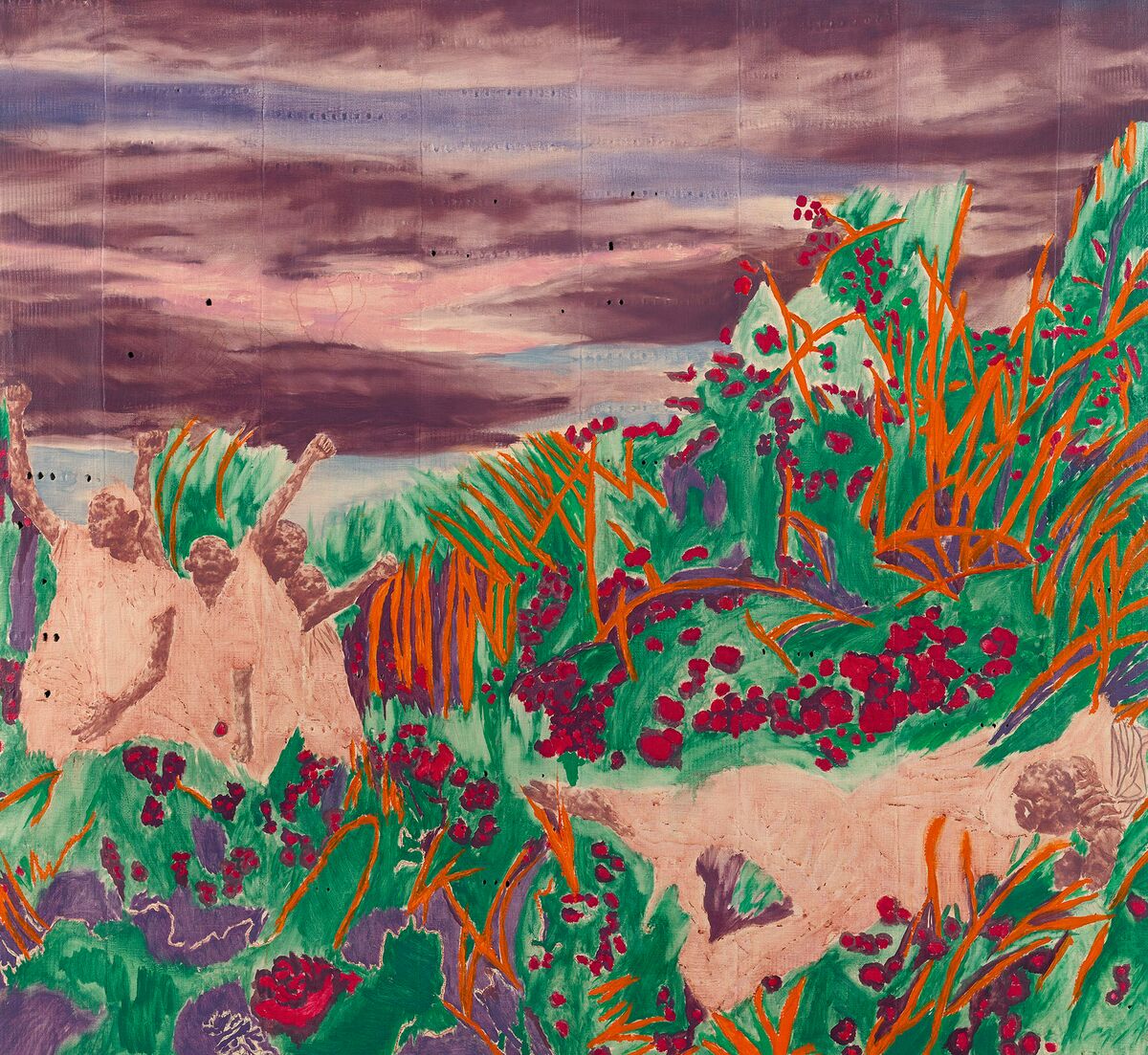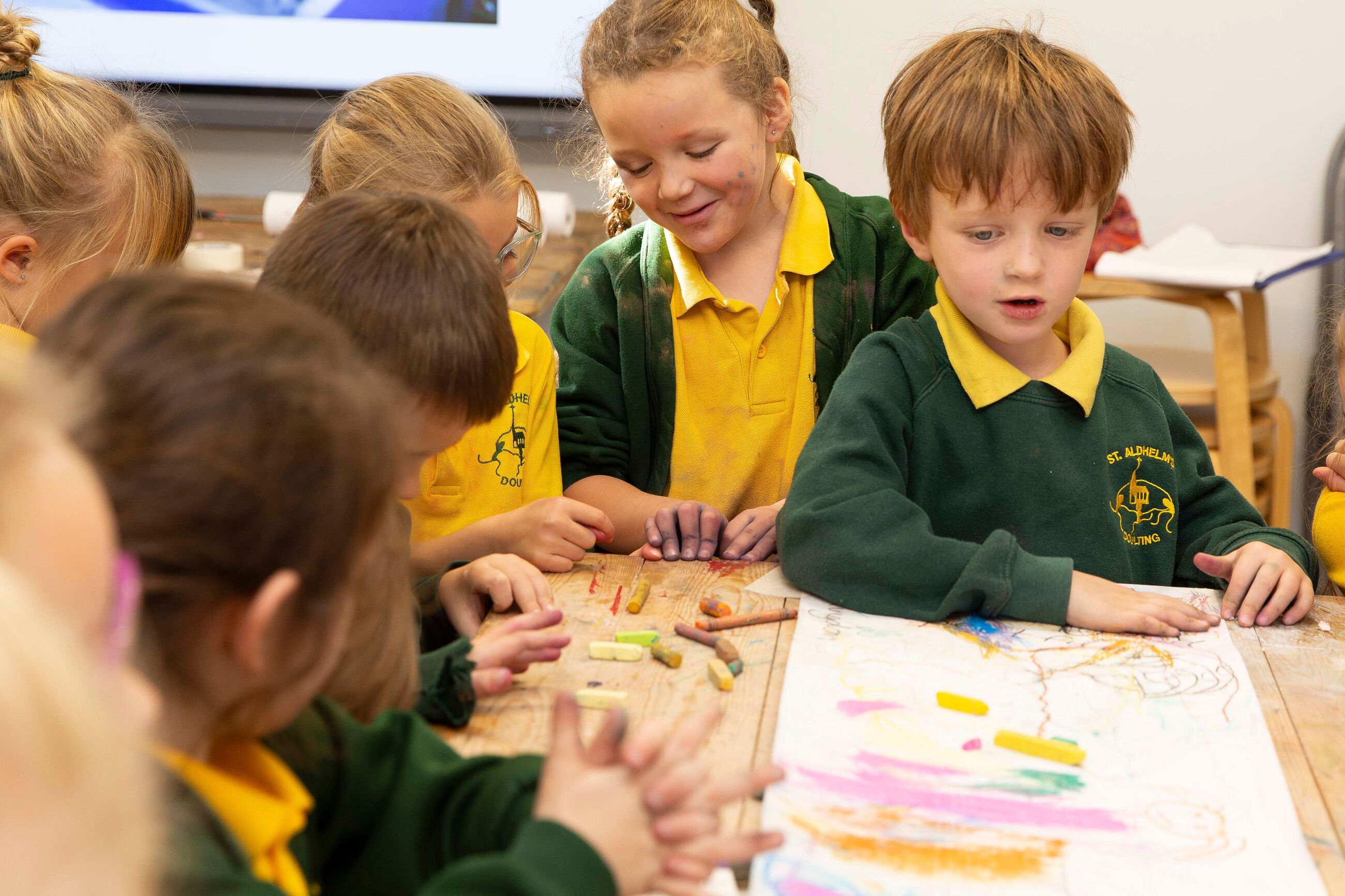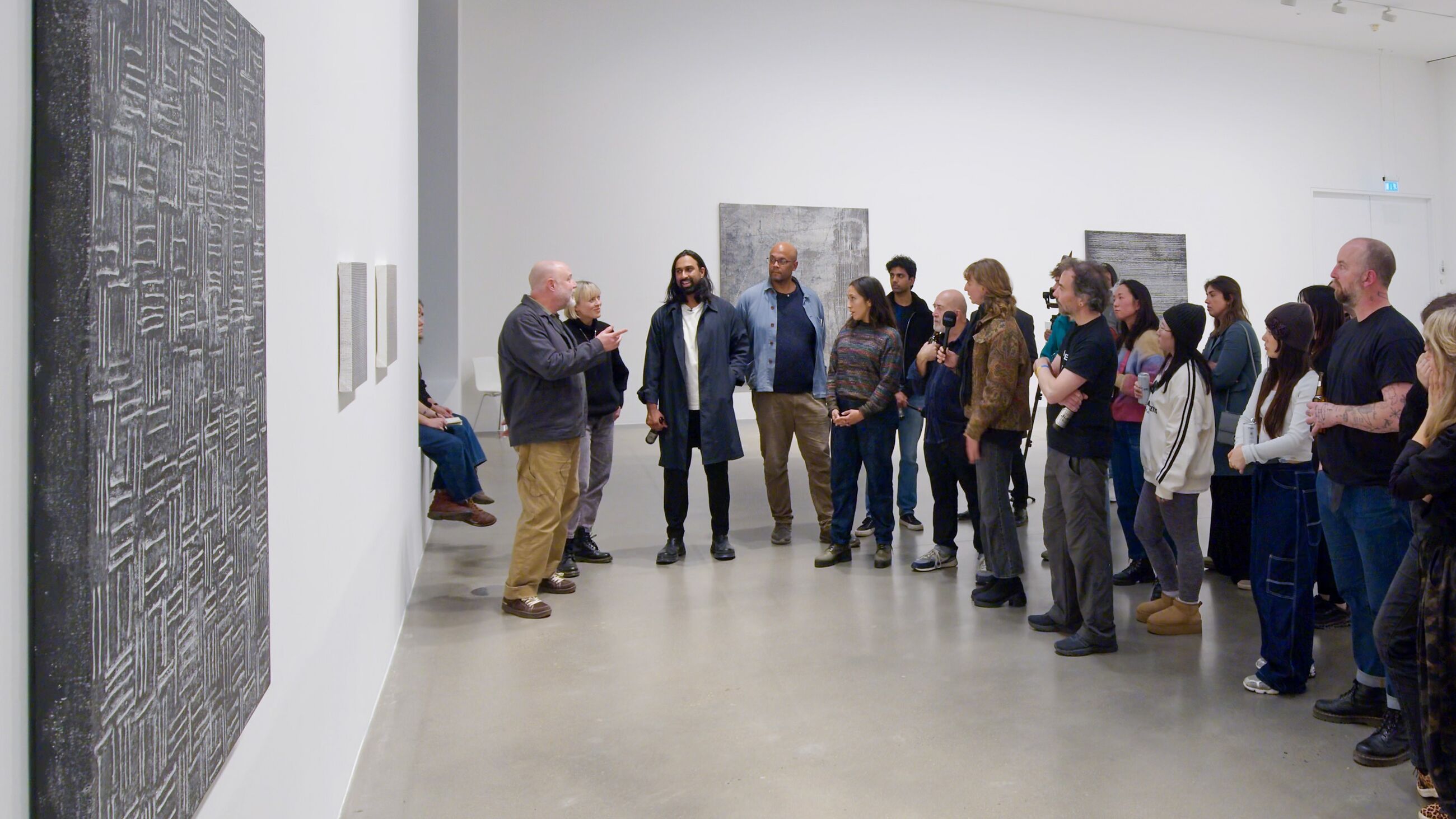Teachers’ Notes: ‘Günther Förg. Tupfenbilder’

© Wilhelm Schürmann, Herzogenrath
Teachers’ Notes: ‘Günther Förg. Tupfenbilder’
This resource has been produced to accompany the exhibition ‘Günther Förg. Tupfenbilder’ at Hauser & Wirth London from 1 February – 29 April 2023.
About Günther Förg
Günther Förg is one of the most significant German artists of the post-war generation. His artistic oeuvre encompasses paintings, graphic and sculptural works, as well as photographs.
Born in 1952 in the region of Allgäu, Germany, Förg’s career began in the early 1970s as a student at The Academy of Fine Art Munich. During his studies, Förg developed a practice grounded almost exclusively in grey and black monochrome. In the 1980s, Förg began utilizing photography, printing large-format images of culturally—and politically—significant architectural structures, from Bauhaus buildings in Tel Aviv to fascist constructions in Italy. Förg entered a new phase of experimentation in the late 1980s, which brought him back to painting, but also included the embrace of new materials for him, such as wood, copper, bronze and lead.
By the beginning of the 21st Century, Förg’s paintings had left the formality of minimalism behind. In a new direction, he incorporated a brighter palette and more expressive hand with a series of grid-like marks and intersecting colors. Other works from this era portray vast canvases of negative space interrupted by colorful, gestural hatching and mark-making. Gunther Förg has shown work at numerous exhibitions including Documenta 9 in 1992 and he won the Wolfgang Hahn Prize in 1996.
Günther Förg’s work is held in numerous public collections, including Broad Contemporary Art Museum, Santa Monica CA; Essl Museum, Klosterneuburg, AT; Fotomuseum Winterthur, CH; Kunstmuseum Basel, CH; Museo d’arte contemporanea Castello di Rivoli, Turin, IT; Museo Nacional Centro de Arte Reina Sofía, Madrid, ES; Museum für Moderne Kunst, Frankfurt am Main, DE; Museum of Modern Art, New York NY; National Gallery of Canada, Ottawa, CA; San Francisco Museum of Modern Art, San Francisco CA; S.M.A.K. the Municipal Museum of Contemporary Art, Ghent, BE; Stedelijk Museum, Amsterdam, NL; Tate, London, UK; and the Walker Art Center, Minneapolis IL; among others.

Installation view, ‘Günther Förg. Tupfenbilder,’ Hauser & Wirth London, 2023 © Estate Günther Förg. Photo: Alex Delfanne
What does the exhibition look like?
This exhibition displays Förg’s Spot Paintings, the artist’s final series made between 2005 – 2010 before he stopped painting in 2010 after suffering a stroke. Named the Tupfenbilder series after the German word for ‘spot paintings,’ this body of work celebrates the act of painting. Each work on canvas features contrasting shades of greens, pinks, reds, browns and yellows which dominate the bustling compositions of intersecting cool and pastel hues, which are placed on an off-white or even grey background. The brushstrokes are expressive and dynamic and the dabs of color which make up this body of work convey a playful, chromatic harmony.

Günther Förg, Untitled, 2009 © Estate Günther Förg, Switzerland / DACS 2023
How did he make his work?
These works on canvas are painted in acrylic and oil, and are defined by the gestural nature of the brushstroke. If we look closely, some strokes appear spontaneous whilst others are controlled, slow and precise. The variations in the brushstrokes work to avoid any sense of recognizable pattern.
The nature of the Spot Paintings was partially influenced by photographs Förg saw of Francis Bacon’s studio, which was covered in colorful blotches of paint created when the artist would wipe his brushes on the walls and door of the studio to remove excess paint. This method was familiar to Förg, who would frequently work out the value of a color by dabbing pigment from his brush to a paper or cloth surface. In this way, ‘Untitled’ (2007), as with his other Spot Paintings, enacts an irreverent reversal of artistic tradition.

Installation view, ‘Günther Förg. Tupfenbilder,’ Hauser & Wirth London, 2023 © Estate Günther Förg. Photo: Alex Delfanne
What are the major themes within the exhibition?
Color
Förg is well known for his use of brightly saturated solid colors. Color is an integral element of the Spot Paintings, at times bright and energetic, and others, cool and pastel hued. Förg made the colors himself, employing someone to mix the pigments to create the exact tone and shade.
Language of Abstraction
Within these paintings, Förg engages with the language of abstraction, borrowing from the techniques and troupes of modernist painting, to explore the interplay and possibility of color, the shifting relationship between positive and negative space, and the gestural qualities of different brush strokes.
Modernism and its Masters Förg possessed a deep knowledge of art and art history and his work contains references to modernist masters, such as Barnett Newman (1905 – 1970), Clyfford Still (1904 – 1980), Mark Rothko (1903 – 1970) and Edvard Munch (1863 – 1944), all of whom Förg greatly admired and held in high regard. However, Förg’s painting practice both imitated and reacted against modernism. Like many of his contemporaries, Förg would devote his practice to wrestling with the feeling of disenchantment with painting and the binding ties to modernism.
Painting as Practice
Förg’s early influences included Gerhard Richter (b. 1932), Georg Baselitz (b. 1938), Robert Ryman (1930 – 2019) and Blinky Palermo (1943 – 1977)—all artists who had sought to restructure the picture plane. After graduating in 1979, he embarked on a series of wall paintings: vast fields of color that dispensed with the canvas altogether. In the Spot Paintings, the brushstroke itself becomes the main protagonist, representing an ultimate return to expressive painting, indicating a completion of sorts—a full-circle arrival at painting as a synthesis of experimentation, rooted in art history.
In the artist’s own words, ‘I think painting is a resilient practice; if you look through the history of painting it doesn’t change so much and we always see it in the present. It is still now.’

Günther Förg, Untitled, 2007 © Estate Günther Förg, Switzerland / DACS 2023. Photo: Bernhard Strauss
What other artists does his work relate to?
Rita Ackermann (b. 1968) is a Hungarian-born, New York-based artist whose practice continues to evolve and manifest itself in the shift from representation to abstraction.
Ed Clark (1926 – 2019) was an abstract expressionist painter who pushed the boundaries of abstraction beyond expressionism, with a focus on materiality, form and color.
Martin Creed (b. 1968) is a British artist, composer and performer.
Arshile Gorky (1904 – 1948) was an Armenian-American painter who had a profound impact on the abstract expressionism movement.
Philip Guston (1913 – 1980) was a Canadian-American artist and one of the great inspirations of 20th-century art. His commitment to producing work from genuine emotion and lived experience ensures its enduring impact.
Mary Heilmann (b. 1940) is an American artist and one of the most influential abstract painters of her generation.
Cy Twombly (1928 – 2011) was an American painter, sculptor and photographer.
Jack Whitten (1939 – 2018) was an American painter and sculptor. His work was a part of the abstract expressionism movement, but later became known for the experimental elements of the materials and terrains in his paintings.

Günther Förg, Untitled, 2007 © Estate Günther Förg, Switzerland / DACS 2023. Photo: Stefan Altenburger Photography Zurich
Glossary
Abstract
Art that does not attempt to directly represent reality.
Ambiguous
To be open to more than one interpretation.
Chromatic
Relating to or produced by color.
Conceptual
When a concept or idea is most important and/or relevant.
Expressive
Effectively communicating a feeling or a thought.
Figurative
Representing forms that are recognizably taken from life.
Gesture
A movement of part of the body, especially the hand or the head, to express an idea or meaning.
Minimalism
A movement in sculpture and painting which emerged after World War II, defined by simple colors, shapes and forms.
Modernism
Modernism refers to the 20th-century movement in society and culture that sought a new alignment with the experience and values of modern industrial life. Building on late 19thcentury precedents, artists around the world used new imagery, materials and techniques to create artworks that they felt better reflected the realities and hopes of modern societies.
Monochrome
Something that depicts only one color.
Protagonist
The leading character or a major character in a story.
Trope
A significant or recurrent theme; a motif.
Resources
1 / 10









